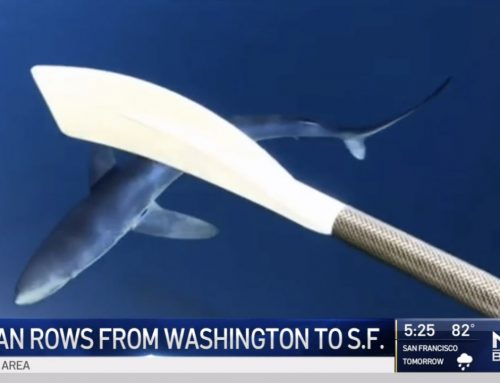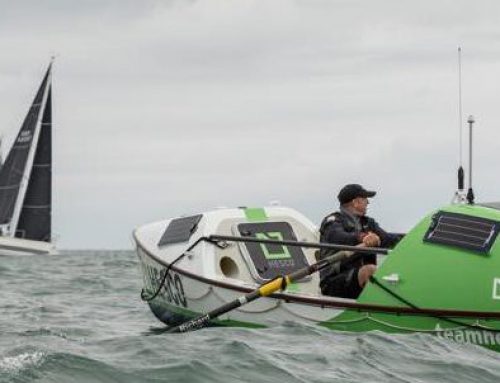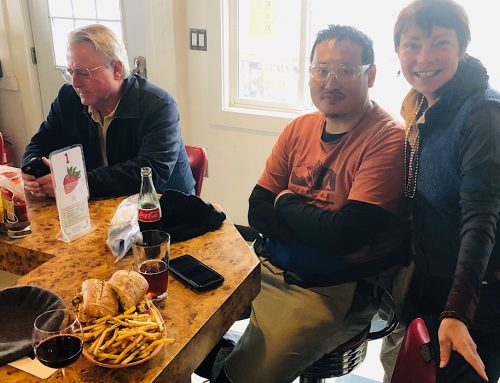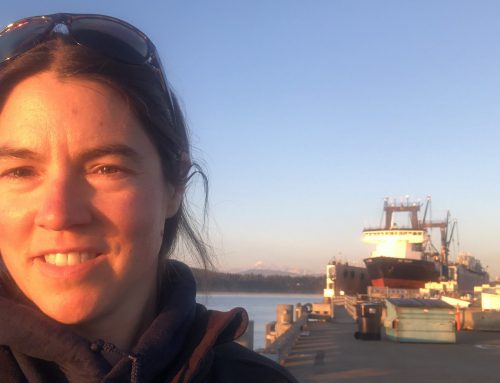I call TowBoat US. The California coastline is no place to get caught offshore in an 800 pound rowboat, solo, at night without a backup plan. I need a support boat on standby before I venture offshore overnight.
I can’t imagine TowBoat US will sell me membership. My boat has oars, no sails, no engine, but it’s worth a call.
At first they say no. Then I get a call back!
By now I’ve worked out that if I leave around 6pm, once the afternoon breeze dies down, I can ride the outgoing tide to Pt. Bonita. It’s important I reach Pt. Bonita by 10pm, before the tide turns. From there to Bolinas and back I estimate will take me 4hrs each way.
It’s important I reach Bolinas by 23:54, but critical I make it back to Pt. Bonita before 05:54am to catch the last of the incoming flood. If I miss the flood, I will have to tuck into the north shore and hope to find the countercurrent. This I know, will make for a laborious home stretch.
My bailout options are:
- Horseshoe Cove by the north tower of the Golden Gate Bridge
- Bolinas lagoon, although I have never entered the lagoon during daylight let alone at night
- I have an anchor rigged with chain and rode ready to deploy.
- If desperate, I imagine I could get a line around a channel marker and tie off for a while, although getting the line through the frame of the marker without damage to the boat may take some careful manoeuvring.
At 4pm I try to take a nap. I feel the excitement of imminent adventure. My head is buzzing. I can’t sleep. At 5pm I decide to heed the call.
I don’t even stop to eat. ‘I will snack as I row,’ I tell myself.
Traffic delays my arrival at the SFYC, but soon I am underway. It’s 6:20pm.
I make it to Yellowstone Bluff on the Marin headland as darkness falls. Balaclava, head torch around my neck, wind-stopper jacket, chest harness on and tethered to the boat, food supplies at hand. I get ready to do battle.
A strong SE wind is blasting off the city of San Francisco and for a while I am despondent. My row may be a non-starter. I turn on the VHF radio and tune into Channel 14 to see if there are any ships coming in and out of the gate. A women is manning Traffic HQ. She responds as “traffic, go ahead.” I listen as one of the ferries requests permission to leave Sausalito for Tiburon, as the captain of the last boat to Alcatraz signs off for the night, as the Hornblower reports leaving the dock for a 2.5hr evening cruise. It’s like I’ve opened the door to another world!
The Traffic Channel has its own terminology too. The cargo ship Pacific Freedom is permitted to go through the “delta echo span of the Oakland Bay Bridge” which trips of Traffic Lady’s tongue as “Delta-Echo-Span” like it’s a canned food. Traffic Lady proceeds to warn Pacific Freedom of the “barge carrying dirt” (her exact words) and that there is a “minimum wake zone north of Alcatraz.” She doesn’t say why. When the Rotterdam Express is given permission to take the “deepwater channel to anchorage 9” I am curious as to where anchorage 9 is. It’s dark, but thanks to this endless stream of communication the bay around me is now completely and utterly alive with activity I can only imagine.
I am tempted to report to Traffic Lady that I am off on a 10 hour cruise to Bolinas and back, but fear this may raise more questions than it answers or worse that I might have to hear Traffic Lady warning ships all night as to my whereabouts. This happened on our approach to Dunedin in New Zealand, while delivering a Wharram Tiki 38. Every few minutes traffic control would warn big ships – not of the catamaran but of the “cata-marangue”. Floating dessert here we come!
The Hornblower turns a giant white search light in my direction because I am transmitting my location via AIS, but being so small they can’t see me. The light is blinding for a few seconds. Then the Mexican Defender goes past me. The freighter is the size of a small island and totally eclipses the skyline of San Francisco, it’s red cherry nav light up front lost amongst the light pollution.
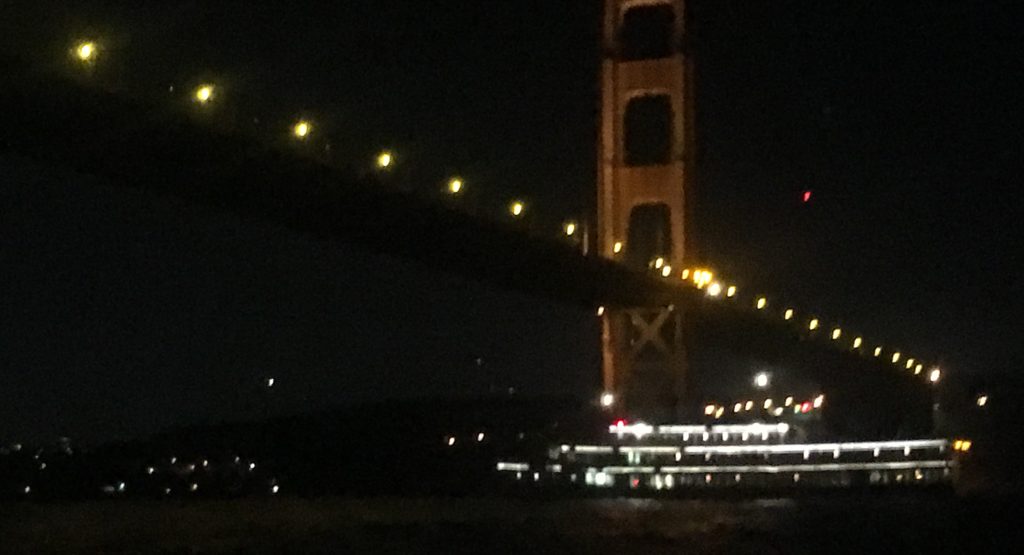
I hook into the outgoing tide and it starts taking me out at an increasing rate. I rocket out of the bay, under the bridge and off to Pt Bonita. I’m rowing at 5 knots! I reach Pt. Bonita 2 hours earlier than my cut off time of 10pm! Then I turn the corner.
I check the chart. I expect to see a shoreline peppered with lights, but most of the coast is the Tamalpais State Park and is pitch black.
A series of red and green marker buoys lead up to Bolinas. I decide that my best plan is to join up the coloured dots. The buoys mark hazards of one kind or another so my goal is to pass each marker as close as possible. Thankfully there is no wind. Zero.
The first buoy is red with a bell. It goes “dingle-dongle, dingle-dongle” in the light air. I aim for the flashing light and get close enough that when the light flashes off I am afraid I am going to hit the steel structure.
My next destination is a green flashing buoy, but further out there is supposed to be an unlit red cone. Great! Just what I need, an unlit marker to avoid.
Boating, the navigation app by Navionics, is excellent. I get a real-time bearing to the unlit cone and actually manage to see the cone as its shadow passes between me and the green flashing buoy.
The next buoy is a flashing red. I hear it as I get nearer. It’s outputting the weirdest sound, a loud groaning like a hippopotamus snoring. This makes me chuckle. Because the swell is only a slight undulation and there’s no wind, it is a very sad wind instrument.
I must be out of range because I lose Traffic Lady and the radio goes dead. Then around midnight the radio springs to life again. “For the whale traffic report, switch to channel 08!” Whale traffic report! This just gets better and better! I hurriedly pick up the radio and thumb to channel 08. “A large concentration of whales has been reported around the Farallones by the Farallon Institute. We request that you reduce speed in the vicinity of the Farallones.” I am left wanting more details, how many whales, what kind of whales…
It’s a long way to my final marker, the flashing green, marking the end of Duxbury Reef. I have no visual from my position near the snoring hippo marker. I happen to have seen Duxbury Reef during daylight from Duxbury Point and so know that the rocks break the surface at low tide. They are a cheese grater for boats.
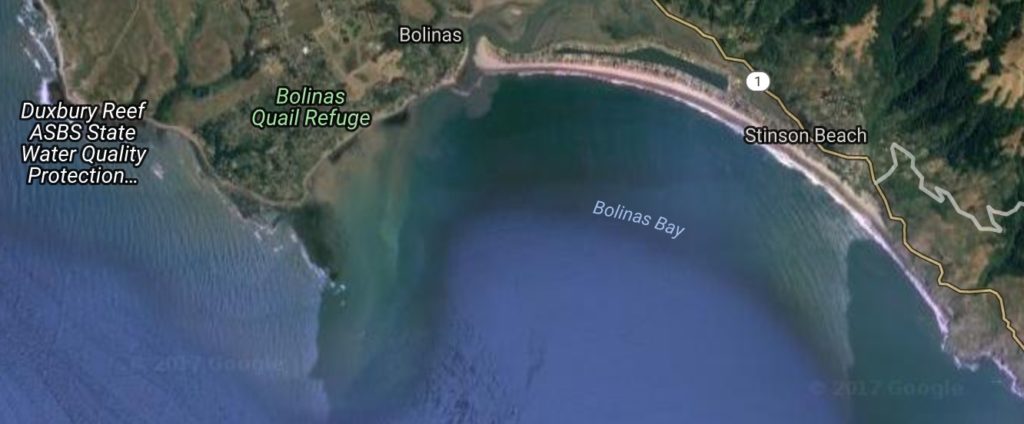
Bolinas. The lagoon is on the inside of the beach
I begin to suffer from lack of sleep. I call my first phase of sleep deprivation ‘Micro Frights.’ I look right and get spooked by the sight of the moon. One of my yacht club flags flutters and I jump. ‘Micro Frights’ gives way to ‘Micro Paranoia.’ My boats navigation light casts a shadow and my brain thinks it’s a boat bearing down. A plane moving through the sky becomes a masthead light of a sailboat heading towards me.
I round the green at 12:50 am, just as the sliver of moon hits the horizon. I’ve been rowing for 7 hours non-stop. I am an hour late arriving at the mark, but my tired brain says that this isn’t a problem because I will pick up a magic carpet ride of current on my way back to Pt. Bonita… ‘Everything will be okay,’ I delude myself.

